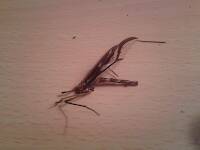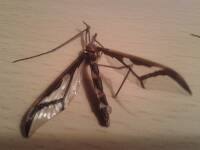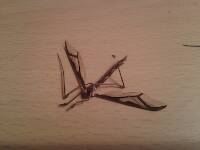
Hex Mayflies
Hexagenia limbata
The famous nocturnal Hex hatch of the Midwest (and a few other lucky locations) stirs to the surface mythically large brown trout that only touch streamers for the rest of the year.
Featured on the forum

As far as I can tell, this species has only previously been reported from one site in Oregon along the Columbia gorge. However, the key characteristics are fairly unmistakable in all except for one minor detail:
— 4 small yellow spots on frons visible in photos
— Narrow occipital spinule row curves forward (but doesn’t quite meet on stem of ecdysial suture, as it's supposed to in this species)
— Short spinules on anterior margin of front legs
— Short rposterior row of blunt spinules on abdominal tergae, rather than elongated spinules dorsally
I caught several of these mature nymphs in the fishless, tiny headwaters of a creek high in the Wenatchee Mountains.
— 4 small yellow spots on frons visible in photos
— Narrow occipital spinule row curves forward (but doesn’t quite meet on stem of ecdysial suture, as it's supposed to in this species)
— Short spinules on anterior margin of front legs
— Short rposterior row of blunt spinules on abdominal tergae, rather than elongated spinules dorsally
I caught several of these mature nymphs in the fishless, tiny headwaters of a creek high in the Wenatchee Mountains.

Troutnut is a project started in 2003 by salmonid ecologist Jason "Troutnut" Neuswanger to help anglers and
fly tyers unabashedly embrace the entomological side of the sport. Learn more about Troutnut or
support the project for an enhanced experience here.
Leskorcala has attached these 5 pictures to aid in identification. The message is below.
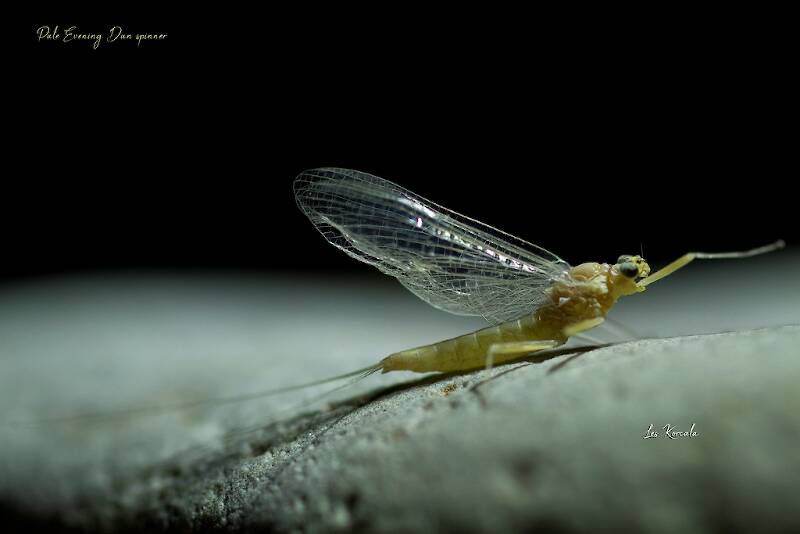
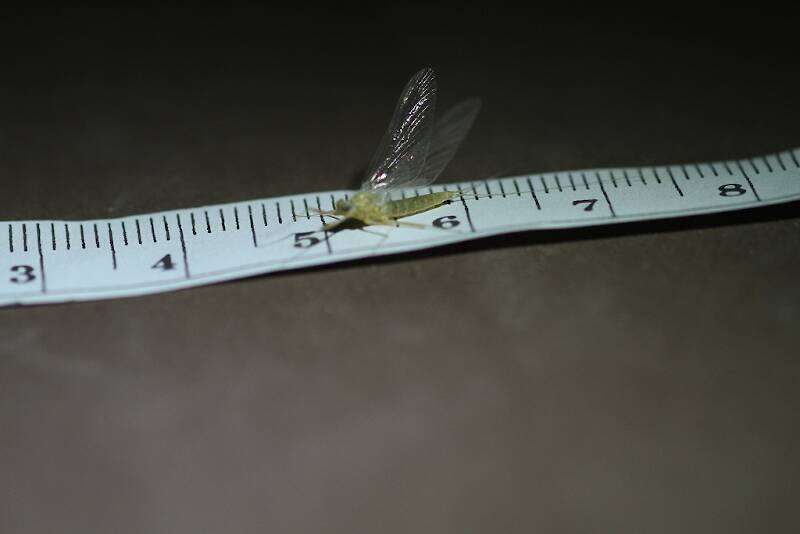
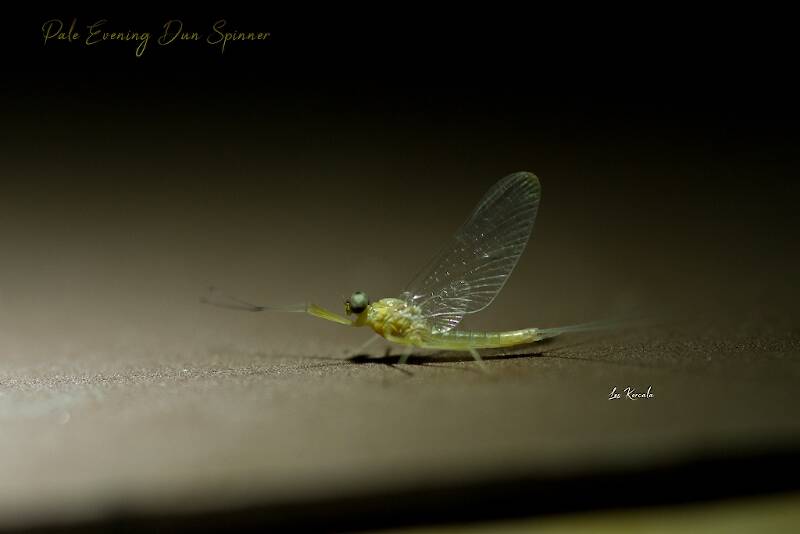
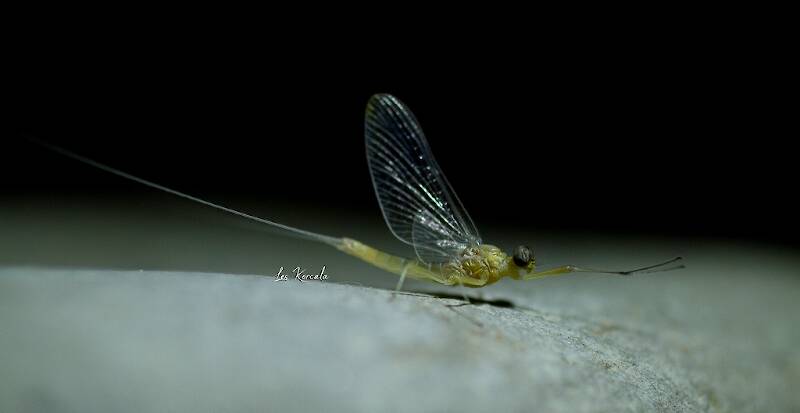

Leskorcala
Posts: 16
Posts: 16
Leskorcala on Aug 24, 2020August 24th, 2020, 3:46 pm EDT
hello, In late July and first week of august I spotted many 2 winged mayflies spinners on the walls of my house (I live about 20 yards from the edge of Bitterroot river, MT ) All of the spinner adults had 2 tails
I have narrowed down by size, tail numbers,emergence to family Heptageniidea , Genus Empeours I believe its E. albertae species. The Slate cream dun
Hope someone can conform this for me. I am in process doing year long project identify all teh major hatches on my home river, hope to get it done next year.
I have narrowed down by size, tail numbers,emergence to family Heptageniidea , Genus Empeours I believe its E. albertae species. The Slate cream dun
Hope someone can conform this for me. I am in process doing year long project identify all teh major hatches on my home river, hope to get it done next year.
Martinlf on Aug 26, 2020August 26th, 2020, 12:49 pm EDT
When Roger sees this he'll probably give you an ID.
"He spread them a yard and a half. 'And every one that got away is this big.'"
--Fred Chappell
--Fred Chappell
Taxon on Aug 26, 2020August 26th, 2020, 4:25 pm EDT
Well Louis, would if I could, but frankly, I'm thoroughly stumped.
Martinlf on Aug 27, 2020August 27th, 2020, 4:34 pm EDT
:O
"He spread them a yard and a half. 'And every one that got away is this big.'"
--Fred Chappell
--Fred Chappell
Troutnut on Sep 3, 2020September 3rd, 2020, 6:35 pm EDT
Hi Les,
Very nice pictures!
I think this probably is Epeorus. From the fourth picture, it looks like the first two tarsal segments are approximately the same length, which usually points to that genus.
I don't think the species is albertae, unless I have misidentified the specimens labeled as albertae on this site, including this one most recently. The coloration of the abdomen is very different, and I seem to recall the spots on the femora are a key feature of albertae as well.
Unfortunately I'm not sure what species it is, as I don't have my ID resources with me at the moment on a trip.
Very nice pictures!
I think this probably is Epeorus. From the fourth picture, it looks like the first two tarsal segments are approximately the same length, which usually points to that genus.
I don't think the species is albertae, unless I have misidentified the specimens labeled as albertae on this site, including this one most recently. The coloration of the abdomen is very different, and I seem to recall the spots on the femora are a key feature of albertae as well.
Unfortunately I'm not sure what species it is, as I don't have my ID resources with me at the moment on a trip.
Jason Neuswanger, Ph.D.
Troutnut and salmonid ecologist
Troutnut and salmonid ecologist
Leskorcala
Posts: 16
Posts: 16
Leskorcala on Sep 10, 2020September 10th, 2020, 5:08 pm EDT
Thanks Jason for your feedback. this is very popular hatch on my home water , lot of anglers would call them PMD but the 2 tail is easy giveaway
sorry in my original post I said 2 winged mayfly ( I was referring to 2 tail mayfly ) anyway , I can see now looking at some references images where spots on femora are absent on this mayfly.
sorry in my original post I said 2 winged mayfly ( I was referring to 2 tail mayfly ) anyway , I can see now looking at some references images where spots on femora are absent on this mayfly.
Quick Reply
Related Discussions
Topic
Replies
Last Reply
Re: Friday evening at the Millpond in Harrisville (1st brown of the year!)
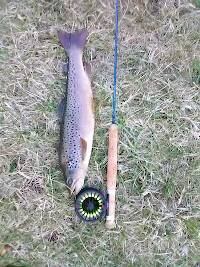
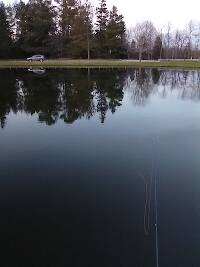
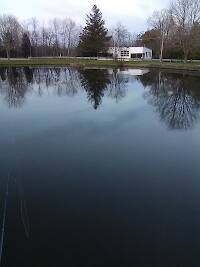
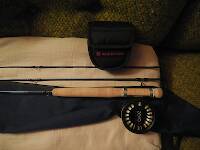
In the Photography Board by Jmd123




In the Photography Board by Jmd123
2
May 5, 2020
by Jmd123
by Jmd123
2
Sep 24, 2006
by Troutnut
by Troutnut
0
Oct 24, 2006
by Troutnut
by Troutnut





